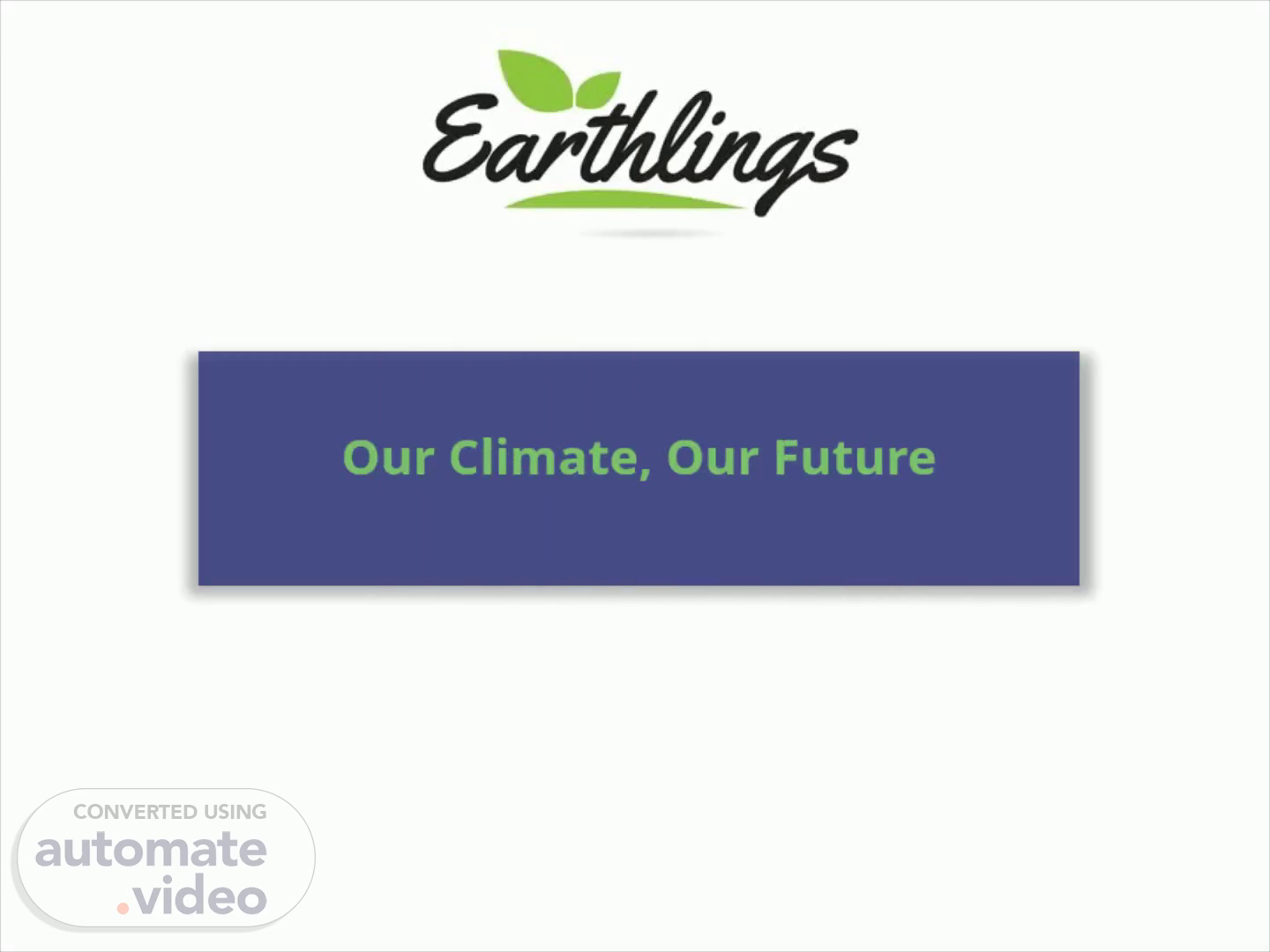
PowerPoint Presentation
Scene 1 (0s)
Our Climate, Our Future.
Scene 2 (3s)
[Audio] What Is Climate Change? Climate change is a change in the average temperature and cycles of weather over a long period of time. The planet is becoming warmer; the climate is changing..
Scene 3 (28s)
[Audio] Why Is Climate Change a Problem? Over millions of years, species become adapted to survive in the conditions in which they live. A stable climate supports this process and allows living things to thrive. If the climate changes quickly, organisms don't have enough time to adapt to new conditions and may no longer be able to survive..
Scene 4 (1m 18s)
[Audio] Why Is Climate Change a Problem? Climate change disrupts weather patterns and causes extreme weather events to become more common. These include hurricane activity, droughts and floods..
Scene 5 (1m 52s)
[Audio] Rising temperatures are causing sea levels to increase. Rising sea levels are driven by two main processes: Ice Melt: When the atmosphere and ocean get warmer, ice sheets and glaciers melt, resulting in the addition of fresh water to the ocean. Thermal Expansion: As ocean water gets warmer, it expands, causing sea levels to rise..
Scene 6 (2m 51s)
[Audio] The increase in global temperatures is causing a reduction in sea ice. This causes problems for animals that depend on the ice to hunt, mate and sleep..
Scene 7 (3m 17s)
[Audio] The orange line on the picture marks the average minimum sea ice coverage from 1981 to 2010. The white ice shows the minimum sea ice coverage in 2020. The difference between the two exceeds one million miles..
Scene 8 (4m 1s)
[Audio] No matter how fast we act, the global temperature is set to continue rising as a result of greenhouse gases that are already in the atmosphere. The problems that we are already experiencing are going to worsen. Acting quickly to keep the temperature rise to minimum is extremely important for humans and wildlife..
Scene 9 (4m 50s)
[Audio] Here, are the some statistical data representing the problems of climate change..
Scene 10 (5m 30s)
[Audio] What Causes Climate Change? Energy travels from the Sun to the Earth as short wave radiation. It does not interact strongly with the greenhouse gas molecules so it reaches the Earth's surface..
Scene 11 (6m 8s)
[Audio] The Earth's surface emits long wavelength radiation. This does interact with the greenhouse gas molecules. The greenhouse gas molecules absorb some of the energy, trapping it in the atmosphere. This process keeps the Earth warm and is essential for life..
Scene 12 (6m 29s)
[Audio] The higher the proportion of greenhouse gases in the atmosphere, the more radiation is absorbed. This causes a rise in the temperature of the Earth and is known as the greenhouse effect. This increase in temperature drives climate change..
Scene 13 (7m 12s)
[Audio] Causes of climate change: Burning fossil fuels Deforestation ( destruction of forests) Reduction of biodiversity.
Scene 14 (8m 2s)
[Audio] The 50 least developed countries are thought to have contributed 1% of the greenhouse gases that have caused global warming. The USA, the EU and China alone have contributed around 60%..
Scene 15 (8m 17s)
[Audio] Who Does Climate Change Affect? In most cases, the wealth of prosperous countries has come from activities which contribute to greenhouse gas emissions. This wealth allows these countries to protect themselves from the effects of climate change. Poorer countries are less able to adapt to climate change and therefore suffer the most from its effects. They are also less able to develop because they need to focus on addressing the challenges caused by climate change..
Scene 16 (8m 50s)
[Audio] Who Can Fix It? Government Business And we.
Scene 17 (9m 33s)
[Audio] New Opportunities Innovation is the process of turning an idea into a solution that solves a problem. There will be a need for people leaving education to do things differently, to come up with new ideas for products and technologies and to explore new conservation methods. These opportunities are exciting! In the future, you may be applying for jobs that don't even exist yet!.